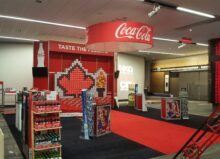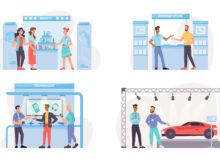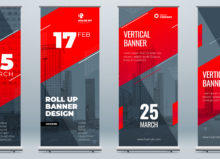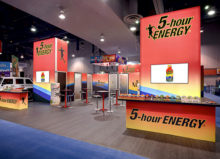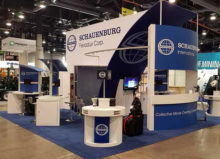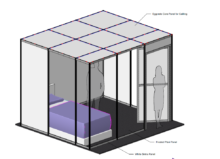How to Build Brand Awareness at Trade Shows
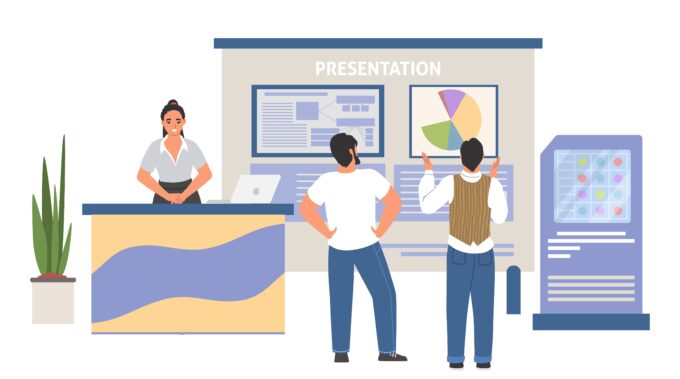
Attending trade shows is one of the best ways to make in-person connections with other professionals in your field and potential customers. However, if you’ve never participated in a trade show, you must create a strategy before exhibiting.
Like any other marketing technique, you must fully understand and define your expectations for the trade show. What are your overall marketing goals? What does success look like for you? What do you hope to accomplish with your exhibition? For many first-time exhibitors, building brand awareness is a top priority—and for a good reason.
When you exhibit at trade shows, you’re fighting for attention, and some of your competitors could be big names in the industry. And people who attend trade shows may not necessarily be ready to purchase, but they will be interested in learning more about each company exhibiting at the show.
In this article, we’ll cover some of the best practices you can follow to help build brand awareness at your next trade show.
Start Marketing Early
First, don’t wait until the day or even the week of the event to start talking about your exhibition. You need to get the word out there a month or more in advance to build the anticipation that will eventually pay off once the doors open.
Start by posting on social media to let your followers know which trade show you’re attending and why they should pay attention to it. You can also incentivize attendance by planning giveaways during the trade show and then advertising those giveaways on social media.
You can also write blogs about which products and services you’ll be promoting at the event and how you and your team are preparing for the event. If you have media connections, put out press releases well in advance (a month or two before the trade show), and if you’re offering a giveaway or other type of promotion, include that in the press release too.
Pay-per-click advertising can also be beneficial, especially if you don’t have a huge following on social media. While creating targeted ads for the trade show won’t necessarily improve sales or revenue, they will get the message out that you’ll be attending and what you’ll be promoting at the show. With online advertising, you can also track impressions (people viewing the ad) and clicks (people who interact with the ad) to better understand your ad’s visibility.
Lastly, if you regularly send email newsletters to subscribers, create a newsletter centered around the trade show and send it to your subscribers at least a month in advance.
Customize Your Booth Design for Each Trade Show

One of the most critical factors to remember in building brand awareness is this: not every trade show is created equally. Everything from exhibitors to the audience demographics can and will change, even if the trade shows still target one specific industry.
You must develop a unique theme and strategy for each trade show you plan to attend. Learn as much about each show and who your target audience will be. You can gain a deeper insight into audience demographics based on the venue’s location. Understanding your target audience will help you understand what elements need to be in your display. Please visit our blog for more tips and practices on booth design.
Optimize Your Website
When you attend trade shows, your goal is to establish relationships with potential customers, and you don’t want that relationship to end as soon as the event does. More often than not, this means that people will continue that relationship through various digital channels like your website.
With this in mind, you need to ensure that your website offers the best experience that it possibly can. A poor website experience—meaning one that isn’t optimized for mobile devices, is difficult to navigate, is slow to load, or doesn’t have helpful information on it—can absolutely negatively impact customer acquisition and retention.
Online users aren’t interested in waiting for slow websites to load; they’re also not interested in spending too much time trying to find what they need. If your products, services, and other offerings aren’t easily accessible, online users won’t stay on your website for too long.
Before attending trade shows, analyze your existing website. What elements could be improved? You’ll want to examine the following aspects:
- Main Navigation Bar: Does the main navigation bar make sense to someone unfamiliar with your business? Does it accurately display your services and products?
- Call-to-Action Buttons: Do you have call-to-action buttons on your homepage that prompt users to perform any specific action (request quotes, scheduling consultations, etc.)?
- Links: Are there any broken internal or external links on your website?
- Load Time: How fast does your website load? You’ll want to make sure it’s immediate. Anything slower than two seconds is a problem.
- Branding: Is the branding clear on your website? Is your logo, colors, mission statement, vision, and other branding elements accurate/up-to-date?
- Content: Is the content written for your target audience? Do you have information that satisfies customers through every stage of the buyer journey? (General informational content versus specific details about your products and services and who you are as a business).
You’ll also want to ensure you post information about the trade show on your website, including booth number, venue location, pricing, and any specific information about your exhibition.
Learn More From GraphiColor
Creating a trade show strategy can be challenging, which is why you need a professional like GraphiColor by your side. Founded in 1984, we’re an award-winning graphic design company specializing in trade show displays, booths, and banners. We also provide trade show management services, including trade show marketing, planning, and transportation/logistics.
Schedule a consultation today to learn more about how we can help you build brand awareness at your next trade show.

